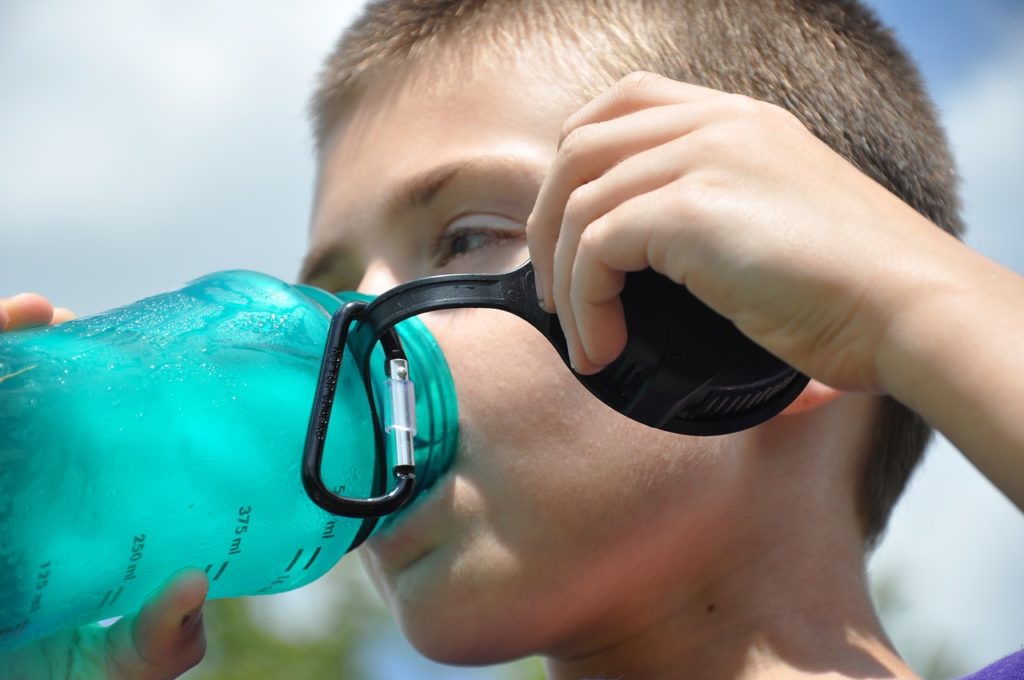In an era of increasing environmental consciousness, initiatives promoting sustainability have become prevalent, aiming to find innovative solutions for water scarcity. However, the marketing campaign entitled “Toilet to Tap” has proven to be a monumental failure. This campaign, designed to encourage the reuse of treated sewage water, fails to effectively address the public’s concerns about safety and hygiene, ultimately resulting in a negative perception among consumers. By exploring the reasons behind its failure, it becomes evident that the “Toilet to Tap” campaign is an unfortunate misstep in the realm of marketing sustainability and water conservation.

Lack of Public Acceptance
Negative Public Perception
One of the primary reasons why the concept of toilet to tap faces significant challenges is the negative perception held by the general public. The notion of drinking water that has been reclaimed from sewage is met with skepticism and disgust. This negative perception stems from a lack of understanding and misinformation about the treatment processes involved.
Concerns about Safety
Another factor contributing to the lack of public acceptance is the concern about safety. Many individuals worry about potential health risks associated with drinking water that has originated from sewage. While the treatment processes are designed to remove contaminants and ensure water quality, the stigma and fear associated with sewage pose a significant barrier.
Cultural Taboos
Cultural taboos and societal norms also play a significant role in hindering the acceptance of toilet to tap initiatives. In many cultures, the concept of consuming water that has been reclaimed from sewage is considered unclean or taboo. Overcoming these deeply ingrained beliefs and challenging societal norms is a significant hurdle that proponents of toilet to tap must address.
Environmental Concerns
Potential Impact on Ecosystems
One of the key concerns surrounding toilet to tap initiatives is the potential impact on ecosystems. Releasing treated sewage into natural bodies of water can disrupt the delicate balance of ecosystems and harm aquatic life. The introduction of nutrient-rich wastewater can lead to excessive algae growth, oxygen depletion, and harm to fish and other aquatic species.
Unknown Long-term Effects
Despite the progress made in wastewater treatment technology, there are still unknown long-term effects associated with toilet to tap initiatives. The potential consequences on human and environmental health over extended periods of time have not been extensively studied. This lack of comprehensive research raises valid concerns and adds to the skepticism regarding the safety and long-term viability of reclaiming sewage for drinking water.
Chemical Contamination
The presence of chemical contaminants, such as pharmaceuticals, pesticides, and personal care products, in sewage adds an additional layer of complexity to the toilet to tap debate. While treatment processes aim to remove these contaminants, there is a risk that some chemicals may not be completely eliminated. The potential presence of these contaminants in reclaimed sewage raises concerns about their impact on human health and the environment.

Health Risks
Potential Spread of Pathogens
The potential spread of pathogens through reclaimed sewage is a significant health risk that cannot be ignored. Despite advanced treatment methods, there is always a risk of inadequately treated water containing pathogens and disease-causing microorganisms. The transmission of waterborne illnesses can lead to outbreaks and pose a threat to public health.
Inadequate Treatment Methods
Another concern relating to health risks is the potential inadequacy of treatment methods employed in toilet to tap processes. The effectiveness of treating sewage to a level where it meets drinking water standards is still a subject of debate among experts. Insufficient treatment measures may result in the presence of harmful substances or pathogens, further exacerbating the health risks associated with reclaimed sewage.
Risk of Contaminating Drinking Water
The risk of contaminating existing sources of drinking water is a crucial aspect of the health risks tied to toilet to tap initiatives. If reclaimed sewage is not treated to the highest standards or if there are failures in the treatment process, there is a possibility of introducing contaminants into a water supply system that was previously considered safe. This poses grave health concerns for consumers and undermines the goal of providing clean and safe drinking water.
Failure to Address Benefits
Water Conservation
One of the key benefits associated with toilet to tap initiatives is water conservation. Reclaiming sewage water reduces the amount of freshwater needed for various purposes, including irrigation, industrial applications, and even drinking. By utilizing treated sewage, significant water savings can be achieved, especially in water-stressed regions.
Enhanced Water Security
Toilet to tap initiatives also contribute to strengthening water security. By diversifying water sources and reducing reliance on traditional freshwater supplies, communities can become more resilient to water scarcity and disruptions to their water supply. The ability to rely on reclaimed sewage provides a valuable buffer during times of drought or other water supply limitations.
Reduced Demand for Freshwater
Reusing treated sewage water can help alleviate the pressure on freshwater sources. In many parts of the world, the demand for freshwater is rapidly increasing while the available supply remains limited. Toilet to tap offers a promising solution to reduce the strain on existing freshwater reserves and ensure a sustainable water future.

Technical Limitations
High Cost of Treatment
One of the significant barriers to implementing toilet to tap initiatives is the high cost associated with treatment processes. The technologies and infrastructure required to effectively treat sewage water to meet drinking water standards can be expensive to develop, operate, and maintain. These costs can be prohibitive, particularly for smaller communities or regions with limited financial resources.
Limited Implementation Options
The technical limitations of toilet to tap also extend to the limited implementation options available. Not all regions have access to the necessary infrastructure or suitable water sources for reclaimed sewage. Factors such as geological conditions, water availability, and existing treatment facilities can restrict the feasibility of these initiatives, further complicating their widespread adoption.
Quality Control Challenges
Maintaining consistent water quality and meeting strict regulatory standards is a complex undertaking for toilet to tap projects. The treatment processes must be constantly monitored and adjusted to ensure that the reclaimed water meets or exceeds drinking water standards. Quality control challenges arise from the potential presence of contaminants, the need for specialized treatment methods, and the ongoing operation and maintenance of treatment facilities.
Lack of Government Support
Insufficient Funding
One of the primary reasons for the lack of progress in toilet to tap initiatives is the insufficient funding provided by governments. Developing and implementing these projects require significant financial resources, and without adequate funding, progress is hindered. Governments must recognize the long-term benefits and invest in the necessary infrastructure and research to further the adoption of toilet to tap technologies.
Political Obstacles
Toilet to tap initiatives often face political obstacles that impede their advancement. Politicians may be hesitant to support controversial projects due to concerns about public perception and potential backlash from constituents. This lack of political will can hinder the necessary policy changes and commitments required to overcome the various challenges associated with toilet to tap.
Public Resistance
Government support for toilet to tap initiatives may also be influenced by the resistance from the public. If citizens are not receptive to the idea of reclaimed sewage being used for drinking water, politicians may be reluctant to champion these projects. Overcoming public resistance through effective communication, education, and trust-building is crucial in gaining government support for toilet to tap initiatives.
Alternative Solutions
Water Recycling from Industrial Processes
One alternative solution to toilet to tap is the recycling of water from industrial processes. Numerous industries generate wastewater that can be treated and reused for non-potable purposes, including irrigation, industrial cooling, and cleaning. By implementing water recycling programs in industries, pressure on freshwater sources can be reduced, complementing the objectives of toilet to tap initiatives.
Improved Water Infrastructure
Investing in the improvement of water infrastructure is another viable alternative to toilet to tap. Aging water distribution systems and inefficient water management practices contribute to water scarcity and wastage. By modernizing infrastructure, reducing leaks, and implementing efficient water management strategies, the demand for freshwater can be reduced, making toilet to tap less necessary.
Desalination
Desalination, the process of extracting salt and impurities from seawater, is another promising alternative solution to toilet to tap. As freshwater sources become increasingly scarce, desalinated water can provide a reliable and abundant supply of drinking water. Although desalination has its own challenges, such as high energy consumption and environmental impacts, it offers a viable alternative for regions with ample access to seawater.
Psychological Barriers
Germophobia and Hygiene Concerns
Psychological barriers, such as germophobia and hygiene concerns, contribute to the resistance against toilet to tap initiatives. Many individuals have a natural aversion to anything associated with sewage due to the perception that it is unclean and unsanitary. Addressing these concerns requires educational campaigns that emphasize the rigorous treatment processes involved in reclaiming sewage and highlight the scientific basis supporting its safety.
Negative Stigma Associated with Sewage
The negative stigma associated with sewage perpetuates the aversion to toilet to tap initiatives. The unpleasant smell, appearance, and historical connection to disease and poor sanitation all contribute to the negative perception surrounding sewage. Public opinion can be influenced through effective communication strategies that emphasize the transformation of sewage into clean and safe drinking water, challenging the stigma associated with the source.
Disgust and Social Taboos
Disgust and social taboos also play a significant role in the psychological barriers against toilet to tap. Consuming water that was once sewage elicits feelings of disgust and discomfort for many individuals. Overcoming these psychological barriers requires efforts to normalize the concept of reclaimed sewage as a safe and sustainable water source through extensive public education and engagement.
Communication Failures
Ineffective Messaging
One of the reasons why toilet to tap initiatives face challenges is due to ineffective messaging. Communicating the benefits, safety measures, and rigorous treatment processes involved in reclaimed sewage is crucial in changing public perception. Clear, concise, and science-based messaging can dispel misconceptions and foster understanding and acceptance.
Lack of Transparency
A lack of transparency surrounding toilet to tap initiatives contributes to the communication failures. Some projects may be shrouded in secrecy, causing public distrust and skepticism. A transparent and open approach that involves the public in the decision-making process, provides access to information, and addresses concerns can build trust and facilitate acceptance.
Failure to Educate the Public
A significant communication failure is the failure to educate the public about the necessity and benefits of toilet to tap initiatives. The general public often lacks awareness and understanding of the water challenges faced by communities and the potential solutions available. Comprehensive public education campaigns that emphasize the importance of water sustainability and the science behind treatment processes are essential in garnering support.
Ethical Considerations
Equity and Access to Clean Water
Ethical considerations arise when examining the equity and access to clean water. Toilet to tap initiatives can provide a reliable source of drinking water, particularly in regions suffering from water scarcity. Ensuring equitable distribution and affordable access to reclaimed sewage is crucial to prevent marginalized communities from being further disadvantaged in their access to clean water.
Social Justice Implications
Social justice implications also come into play when discussing toilet to tap initiatives. Marginalized communities, which often bear the brunt of water scarcity and lack of access to clean water, would benefit greatly from these initiatives. However, any implementation must be done in a way that considers social justice, ensuring that these communities are not disproportionately burdened or stigmatized by the source of their drinking water.
Religious and Cultural Beliefs
Ethical considerations must account for religious and cultural beliefs when promoting toilet to tap initiatives. Some religious or cultural beliefs may consider the use of reclaimed sewage as unacceptable or impure. Respecting and accommodating these beliefs is crucial in fostering acceptance and ensuring that toilet to tap initiatives do not infringe upon individuals’ religious or cultural practices.
In conclusion, the lack of public acceptance, environmental concerns, health risks, failure to address benefits, technical limitations, lack of government support, psychological barriers, communication failures, and ethical considerations all contribute to the challenges faced by toilet to tap initiatives. A comprehensive understanding of these factors is essential in formulating effective strategies to overcome resistance, garner support, and promote the adoption of sustainable and innovative solutions for water management. While solutions such as recycling water from industrial processes, improving water infrastructure, and desalination offer alternatives, addressing the various obstacles to toilet to tap is crucial in advancing water sustainability and ensuring access to clean water for all.



